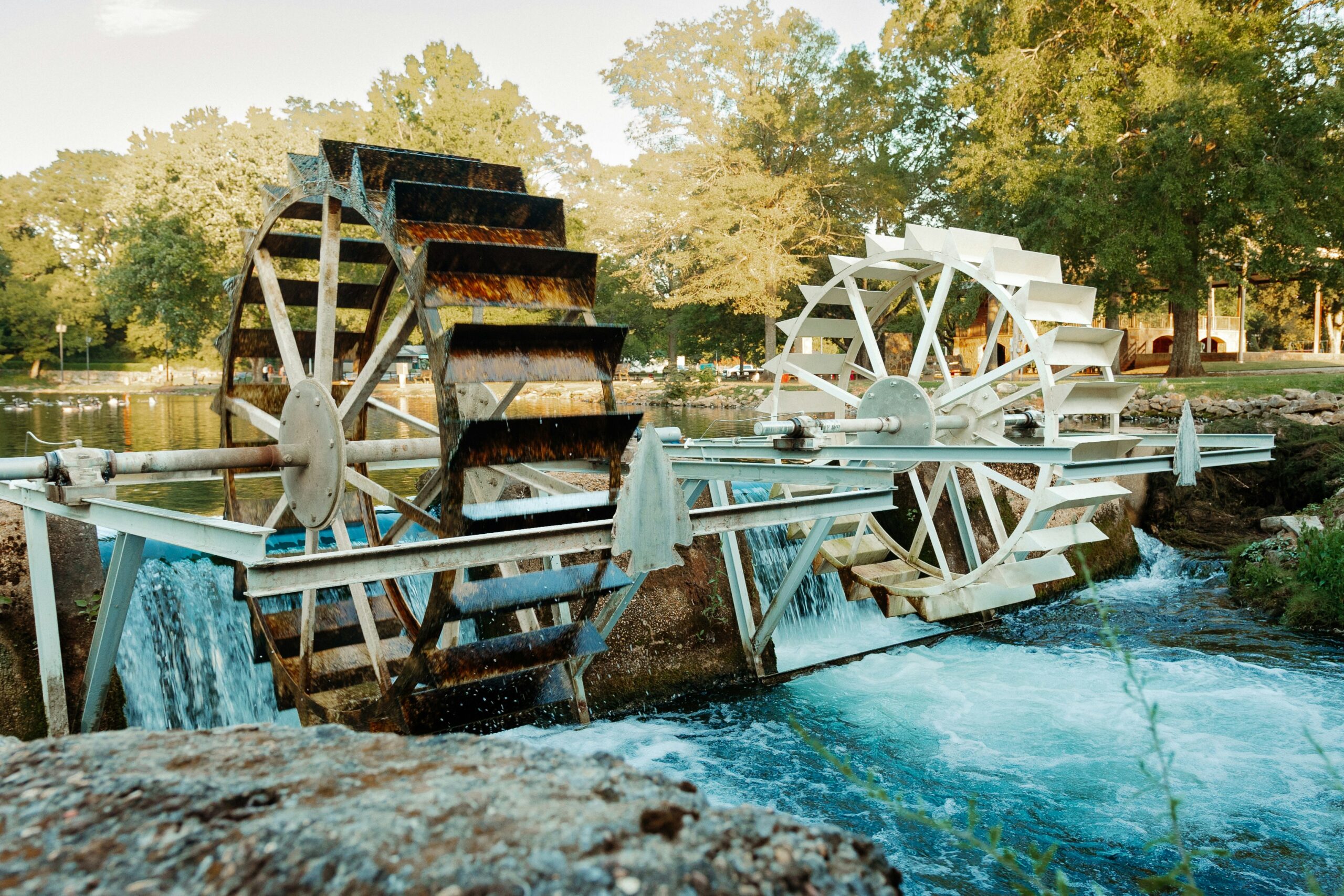
The Sim Corder/Harrison Mill stood as a vital cornerstone in the early years of American industry. Built during a time when communities relied heavily on local resources, the mill provided a reliable means of transforming raw grain into usable flour. Its presence reduced the burden of manual labor and introduced a system that emphasized productivity and efficiency. By doing so, it helped shape the rhythm of daily life for farmers and townspeople who depended on its steady output.
Moreover, the mill became an early symbol of industrial progress. Its mechanical design represented a significant step forward from the hand tools of earlier generations. Each rotation of the wheel reflected a fusion of natural power and human innovation, demonstrating how ingenuity could transform simple materials into lasting systems. Consequently, the mill was not merely a place of work but also a beacon of advancement, inspiring local communities to embrace industrial methods with confidence.
Harnessing the Power of Water
Water was the lifeblood of the Sim Corder/Harrison Mill, and its use demonstrated both practicality and foresight. By diverting the flow of nearby streams, builders created a dependable source of energy that required no fuel beyond nature itself. This reliance on renewable power marked a turning point in the relationship between communities and their environment. Farmers who brought grain to the mill understood that their livelihood was linked not only to the harvest but also to the flowing water that drove the wheel.
Equally important, the design of the waterwheel showcased careful engineering. Builders calculated angles, weights, and flow rates to ensure maximum efficiency while minimizing wear on the structure. This precision resulted in a machine that operated consistently across seasons, reinforcing the community’s faith in both the technology and the natural resources that sustained it. As a result, the waterwheel became more than a mechanical component—it became a trusted partner in the town’s growth.
A Hub for Commerce and Community
The Sim Corder/Harrison Mill also served as a gathering place where economic and social ties intertwined. Farmers brought their grain to be processed, but in the process, they also exchanged news, bartered goods, and built lasting relationships. The mill became a marketplace of ideas as well as commodities, where community members strengthened bonds through shared reliance on its services. This role elevated the mill from a functional site to a cornerstone of local culture.
Furthermore, the mill’s success stimulated broader economic activity. As it produced flour and other goods, local markets expanded, and surrounding businesses found opportunities to thrive. Inns, shops, and workshops benefited from the steady flow of visitors to the mill, creating a ripple effect of prosperity. Through its pivotal role in commerce, the mill fostered both growth and stability, demonstrating how one structure could influence the trajectory of an entire community.
Craftsmanship and Ingenuity
At the heart of the mill’s enduring reputation lay the craftsmanship that shaped its machinery. Builders employed traditional skills to fashion gears, beams, and stones with remarkable accuracy. Wooden teeth in the gears interlocked seamlessly, transferring energy without the need for modern lubricants or complex alloys. Every detail spoke of an intimate knowledge of materials and an understanding of how to balance durability with functionality.
In addition to craftsmanship, the ingenuity behind the mill reflected a forward-looking mindset. While its builders used the tools of their time, they also planned for longevity, ensuring that the mill could withstand decades of use. Adjustments were built into the design so that wear and tear could be managed without complete reconstruction. This attention to both detail and adaptability allowed the Sim Corder/Harrison Mill to remain operational long after many of its contemporaries had fallen silent.
Shaping Agricultural Practices
The presence of the Sim Corder/Harrison Mill altered the way farmers approached their work. Before its construction, grain processing was an exhausting and time-consuming task that often limited productivity. With the mill’s assistance, farmers could process larger harvests with less effort, enabling them to expand their planting and diversify their crops. This transformation marked a decisive step toward modern agriculture by linking efficiency with sustainability.
Additionally, the mill introduced a measure of stability to farming communities. Because the mill could handle seasonal surpluses, farmers had greater confidence in producing more without fear of waste. This security encouraged experimentation and investment, laying the groundwork for agricultural advancements. In this way, the mill not only supported farmers but also reshaped the patterns of rural life, tying innovation in industry to progress in agriculture.
A Legacy of Innovation
Even as industrial technologies evolved, the Sim Corder/Harrison Mill remained a powerful reminder of the early stages of American progress. Steam engines and electricity eventually surpassed waterwheels, but the lessons embedded in the mill’s design continued to resonate. Its reliance on renewable power, its adaptability, and its connection to community values provided enduring insights into how innovation could serve society as a whole.
The legacy of the mill extends far beyond its physical presence. Today, it symbolizes the transition from traditional labor to mechanized industry, representing both the struggles and triumphs of a formative period. By studying its history, modern audiences can appreciate not only the technical achievements of its builders but also the cultural importance of a structure that once defined daily life. Thus, the mill’s story continues to turn, much like its wheel once did, carrying forward the momentum of history.